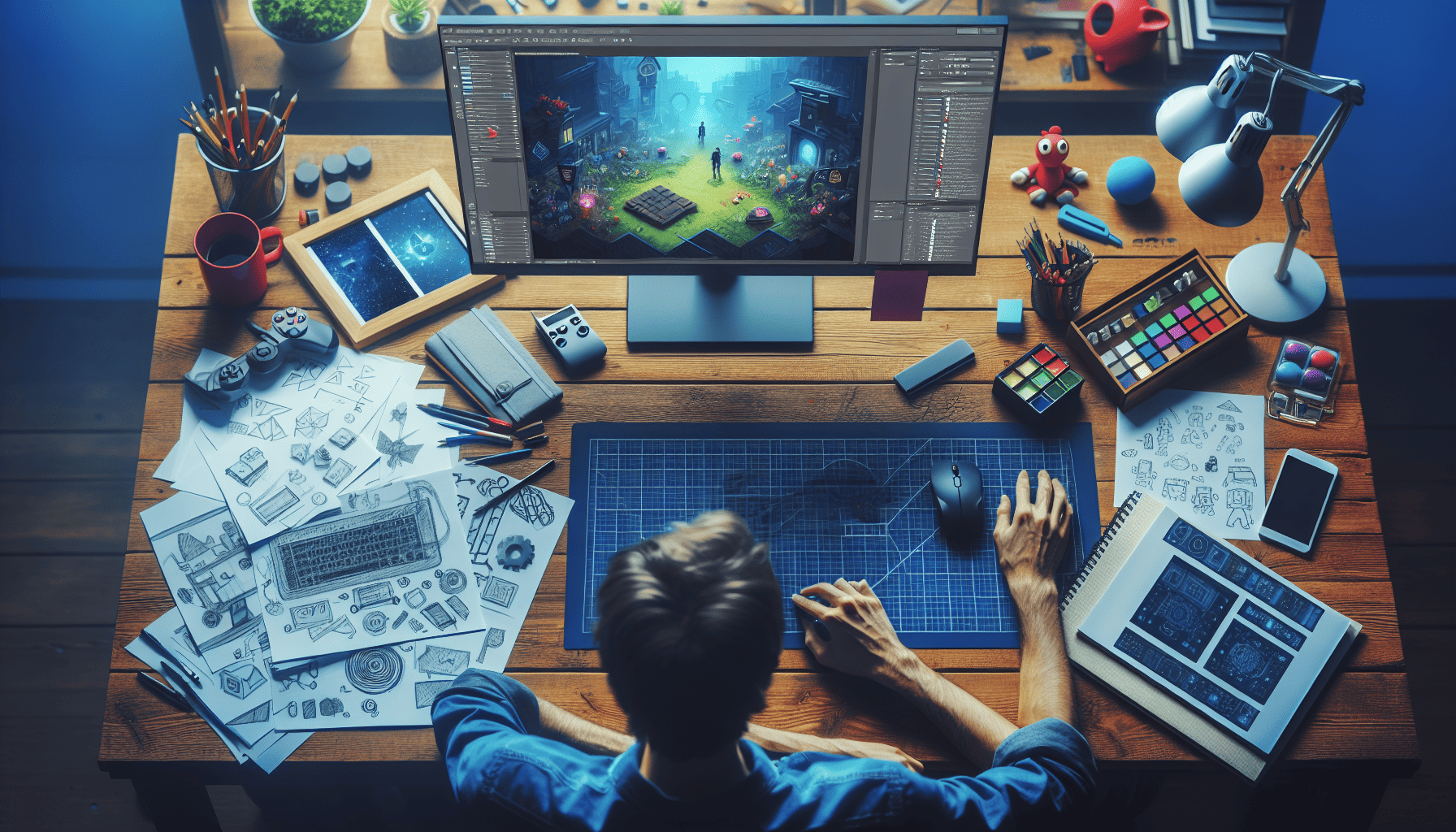Game design is a captivating blend of creativity, technology, and passion, inviting creators to turn their imaginative concepts into interactive realities. At Game Forge Labs, the journey from concept to creation is both an art and a science, challenging developers to innovate while considering the technical constraints and player expectations. Here's how an initial idea evolves into a fully realized game, along with the skills and processes that breathe life into these digital worlds.
Conceptualizing the Game
The first step in game design involves the ideation of the game concept. This is where creativity reigns supreme. Designers brainstorm ideas, considering what kind of experience they wish to offer players. The concept could be inspired by various facets – a unique narrative, innovative mechanics, or a compelling visual style. This stage is crucial as it forms the foundation for all subsequent development and requires a balance between ambition and feasibility.
Designing the Mechanics
Once the concept is in place, the next challenge is to design the game mechanics. This involves defining the rules and systems that will govern gameplay. Fundamental questions are addressed during this phase: How will players interact with the game? What challenges will they face? How will they be rewarded? Designers and developers collaborate to create engaging mechanics that are intuitive yet offer depth. The mechanics must also align with the overall theme and mood of the game, ensuring a seamless player experience.
Crafting the Narrative and Visuals
The narrative and visual elements of a game are what captivate players and keep them invested in the world created. Writers, artists, and designers work closely to develop a compelling story, rich characters, and vibrant settings. The narrative should resonate with the target audience, often serving as the emotional core of the game. Meanwhile, the art style and visual fidelity must enhance the storytelling, creating an immersive atmosphere that draws players in. This harmony between narrative and visuals is pivotal in delivering a memorable gaming experience.
Prototyping and Iteration
Game design is inherently iterative. Once the initial concept, mechanics, and designs are established, the team moves on to prototyping. Prototypes are simplified models of the game used to test ideas and gather feedback. This phase allows developers to experiment, identify potential issues, and refine gameplay aspects. Feedback from internal testers or focus groups is invaluable, providing insights that can lead to crucial improvements or adjustments.
Development and Technical Implementation
With a refined prototype, the game enters full-scale development. This phase involves significant cooperation between game designers, developers, and engineers. The game is outlined into levels, or stages, and the mechanics, narrative, and visual elements are fully integrated. Developers ensure that the game runs smoothly, troubleshooting any technical challenges. They constantly evaluate performance and optimize it for various platforms, making sure the game is both accessible and enjoyable for its intended audience.
Testing and Quality Assurance
Before the public launch, the game undergoes rigorous testing and quality assurance. QA testers meticulously examine every facet of the game, from bug detection to the flow of gameplay. Any issues encountered are logged and communicated back to the developers for resolution. This stage is critical for ensuring a polished final product, one that lives up to player expectations and the original vision of the designers.
Skills Required
Creating a game that strikes a chord with players demands a diverse set of skills. Creativity and imagination are foremost, fueling the ideation of unique and compelling concepts. Technical skills, including proficiency in coding, graphic design, and sound engineering, are necessary to transform these ideas into a playable form. Strong problem-solving abilities and collaboration are crucial, given the myriad of challenges that arise during development. Additionally, a deep understanding of player psychology and market trends can guide designers in crafting experiences that resonate widely.
In conclusion, game design is a dynamic and multifaceted process that combines artistry with systematic planning and execution. Game Forge Labs exemplifies this, nurturing ideas through creativity and technology to deliver engaging and innovative experiences. This journey from concept to creation is a testament to the power of imagination and the possibilities it unlocks in the world of interactive entertainment.
